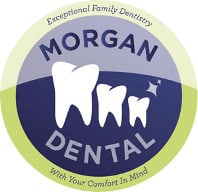What is nitrous oxide sedation?
Nitrous oxide (N2O) mixed with oxygen (O2) is a commonly used dental sedative that produces a giddiness or euphoria, hence the name “laughing gas.” Nitrous oxide, a sweet smelling gas, is a compound of nitrogen and oxygen and is inhaled through a nasal mask. It is a “conscious sedation”. You are capable of rational responses and able to communicate. Its effects are gone within a minute or two following treatment. Nitrous oxide is often used along with local anesthetics during dental treatments such as placement of fillings, crown or bridge work. It can be especially helpful for controlling a gag reflex.
How will I feel when I am using nitrous oxide?
Depending on the concentration and length of administration of nitrous oxide mixed with oxygen, three levels of optimal sedation can be experienced:
- a tingling sensation, especially in the arms and legs, or a feeling of vibration
- warm sensations
- a feeling of well-being, euphoria and/or floating (“drift”)
How is it administered?
A hood is put over your nose that delivers a custom combination of nitrous oxide and oxygen. Flowmeters and pressure gauges allow the administrator to keep an eye on the flow of gases. Once your dental procedure is over, the nitrous oxide is turned off and you breathe pure oxygen for 5 minutes. Because there are no lingering effects for N2O, you are able to resume all normal activity after your dental appointment.
What are the advantages?
- Nitrous oxide sedation is safe for all ages and is particularly helpful for younger children who are new to receiving dental work.
- Nitrous oxide gas works very rapidly and reaches the brain within 20 seconds with relaxation and pain-killing properties developing after 2 or 3 minutes.
- The depth of sedation can be altered from moment to moment, allowing the person who administers the gas to increase or decrease the depth of sedation. Other sedation techniques don’t allow for this. Other sedation techniques have a fixed duration of action (because the effects of pills or intravenous drugs last for a specific time span), whereas gas can be given for the exact time span it’s needed for. It can also be switched off when not needed and then switched on again.
- There’s no “hangover” effect – the gas is eliminated from the body within 3 to 5 minutes after the gas supply is stopped. You can safely drive home and don’t need an escort.
- Unlike IV sedation, no injection is required for this sedation. Inhalation sedation is very safe. It has very few side effects and the drugs used have no ill effects on the heart, lungs, liver, kidneys, or brain. Inhalation sedation has been found to be very effective in eliminating or at least minimizing severe gagging.
Are there any disadvantages?
Some people will not achieve adequate sedation with permissible levels of oxygen due to nasal issues. Those that are “mouthbreathers” and are unable to comfortably breathe through their noses may not benefit from N2O sedation. Those that feel too claustrophobic when something is put over their nose are not ideal candidates for N2O sedation. If you have a severe case of the sniffles and you can’t breathe through your nose, it can’t be used.
What are the risks involved with using nitrous oxide sedation?
Although considered safe, inhaling nitrous oxide (laughing gas) can have associated risks and side effects including nausea, vomiting, allergic reactions, fluctuations in breathing pattern, heart rhythm and/or blood pressure.
Who should not use nitrous oxide for dental treatments?
Those with emphysema or other respiratory problems should not use nitrous oxide without consulting with the treating physician. Those who are or may be pregnant should not use nitrous oxide.
